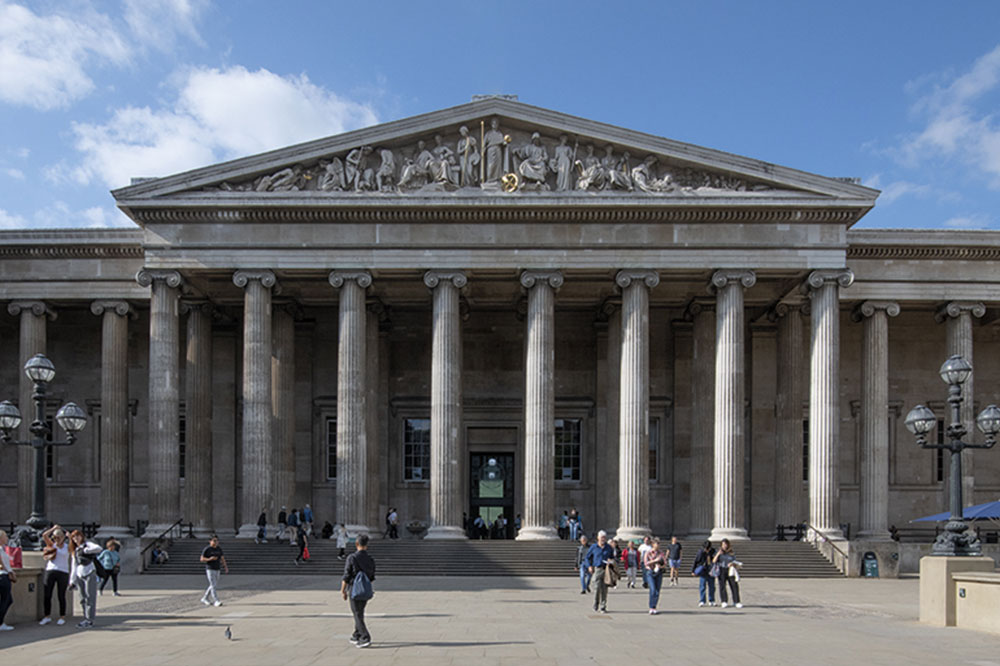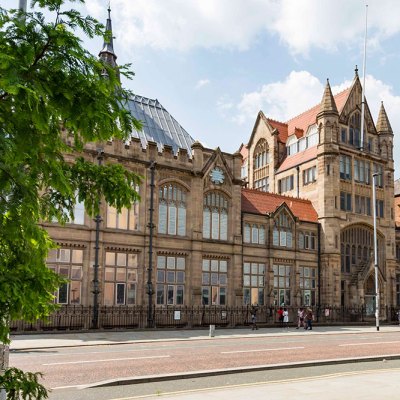From the March 2023 issue of Apollo. Preview and subscribe here.
Try to wander into the grand entrance of the British Museum and you will find yourself waylaid in a snaking corridor of crowd barriers and then a small white tent containing security controls. If any intervention could be imagined to undermine the intended impression of a grand entrance via the Greek Revival forecourt and portico, this might rank pretty high. But at least the BM still has its main entrance. So many other grand museums have found their porticoes downgraded. At the Philadelphia Museum, for instance (recently made over by Frank Gehry), the famous ‘Rocky Steps’, up which Sylvester Stallone ran triumphantly, have long led to, well, not much art all. The main entrance is now around the corner. Or try walking up the steps at Tate Britain and you’ll be directed round the side. And just look at the trouble the National Gallery walked into when it commissioned Annabelle Selldorf to redesign the former secondary entrance of the Sainsbury Wing as the museum’s main entrance (which it had become anyway), leaving William Wilkins’ original portico and lovers of Robert Venturi and Denise Scott Brown’s postmodernism bereft.
The great art and encyclopaedic museums of the 19th century were mostly inspired by Greek or Roman precedents and were fiercely symmetrical. Their lobbies were as elevated as their contents, usually accessed via flights of steps which literally illustrated the uplifting effects of culture, evoking a hint of Parthenon as they rose.
In the 20th century these classical porticoes faced a twin-pronged assault from which they have never quite recovered. The first attack came from modernist architects and museum directors who disliked the historicism and hierarchy implicit in the symmetrical plan and central entrance. Sometimes in an effort to make the museums appear more democratic and sometimes in an attempt to rationalise museum campuses that had accreted layers and blocks over the years, new, less intimidating entrances were instituted – occasionally in unexpected places; round the side, in new modern wings, even underneath. The second came from the reasonable expectation that museums should be made physically as well as intellectually accessible. Those banks of steps, often followed by more banks of steps inside, were anything but.
To this was more recently added an extra layer of challenge in the demands of increased security, guarding against threats from bombs in backpacks to bombs in vans, and leading to a new stratum of stuff: tents, temporary buildings, concrete barriers, massive bollards and so on. The results have been an ongoing degradation of the logic of the plan, and a lot of tourists wandering hopelessly around porticoes which must, surely, have a way in.
The tent outside the entrance to British Museum in London, 2023. Photo: Millie O’Connor

It’s an intriguing situation and one rarely confronted by the museums themselves. To some extent it can be blamed on architects who, at least since the 1940s, have had a visceral aversion to the classical symmetrical axis. That reaction was provoked, in part, by the adoption of the portico as a leitmotif of Fascist architecture, a representation of power and the desire of various regimes to be seen as natural successors to the classical civilisations. In Fascist Italy and Nazi Germany this was clearly the case, and the neoclassical style favoured by Stalin displayed similar characteristics. In their desire to distance themselves from this perceived architecture of totalitarianism and empire, and from the Beaux-Art traditions they felt were stifling education and invention, the modernists eschewed axialsymmetry in favour of more complex, less trumpeted routes. The entrance moved off centre, as if to sublimate its ego, to suggest a freer, more liberated architecture. And when confronting historic buildings, efforts were made to shift axes and entrances, to create new perspectives. Those lofty stairs were by-passed, democratising culture, evening it out, bringing it down to the baseline of the city.
The approach culminated in buildings that directly challenge those just looking to get in. Think of the Guggenheim Bilbao, where Frank Gehry created an architecture that appeared to address the city with equanimity on all sides. The result is that visitors need to traipse around the entire megastructure to find the entrance. Ironically, it is now a landscape dominated by steps. Certainly, it is a way of making visitors engage with the architecture. But it is also a colossal wind-up.
The architect David Chipperfield, who has worked with many formal, classical museums from St Louis to Berlin, including actual Nazi buildings such as Paul Troost’s eerily banal Haus der Kunst in Munich, has engineered some interesting compromises. At the Royal Academy in London he carved an asymmetric route through the complex web of its spaces, creating a (slightly wonky) axis through disparate buildings where formerly there was none. At Berlin’s Museum Island, meanwhile, he built the ‘world’s most expensive cloakroom’ (as the German press dubbed it), in the shape of an entrance building to unite all the various fanatically axial, porticoed and classical buildings on the site, using a determinedly asymmetrical modernist plan but also adopting the colonnades that mark it as a classical entrance nevertheless. And now, in his design for the National Archaeological Museum of Athens, he is setting a new entrance into an underground podium beneath the building’s grand portico. Slightly asymmetrically, of course. I.M. Pei, on the other hand, famously ignored the Louvre’s doors to build a pyramid and excavate a new underground entrance – but then also kept it fanatically on-axis.
The irony is that in the search for accessibility these great museums have made themselves curiously inaccessible, at least in the sense that it is often impossible to find the entrance. In denying the logic of their classical architecture, in that nervy conflict between classical grandeur and the demands of modernity, they are eroding their claims to openness. Compromise is critical, since if museums are going to be genuinely accessible they need to be approachable. And if the argument is that those imposing classical porticoes were designed to suggest a treasure-house of a patrician elite, the question is what the new gestures of welcome and openness might look like. If museums want to continue to encourage new visitors they will need to think deeply about what to do with their imposing thresholds and whether undermining them might undermine the institutions themselves.
From the March 2023 issue of Apollo. Preview and subscribe here.



